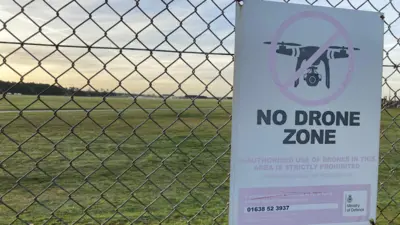We've updated our Privacy and Cookies Policy
We've made some important changes to our Privacy and Cookies Policy and we want you to know what this means for you and your data.
Palm trees 'grew on Antarctica'
Top Stories
- Author, Jason Palmer
- Role, Science and technology reporter, ҙуПуҙ«ГҪ News
Scientists drilling deep into the edge of modern Antarctica have pulled up proof that palm trees once grew there.
Analyses of pollen and spores and the remains of tiny creatures have given a climatic picture of the early Eocene period, about 53 million years ago.
The suggests Antarctic winter temperatures exceeded 10C, while summers may have reached 25C.
Better knowledge of past "greenhouse" conditions will enhance guesses about the effects of increasing CO2 today.
Top Stories
The early Eocene - often referred to as the Eocene greenhouse - has been a subject of increasing interest in recent years as a "warm analogue" of the current Earth.
The breakup of the last two supercontinents, Gondwana and Laurasia had begun, and Antarctica was not far from where it remains today, with Australia still to break off.
"There are two ways of looking at where we're going in the future," said a co-author of the study, James Bendle of the University of Glasgow.
"One is using physics-based climate models; but increasingly we're using this 'back to the future' approach where we look through periods in the geological past that are similar to where we may be going in 10 years, or 20, or several hundred," he told ҙуПуҙ«ГҪ News.
Top Stories
The early Eocene was a period of atmospheric CO2 concentrations higher than the current 390 parts per million (ppm )- reaching at least 600ppm and possibly far higher.
Global temperatures were on the order of 5C higher, and there was no sharp divide in temperature between the poles and the equator.
Drilling research carried out in recent years showed that the Arctic must have had a subtropical climate.
But the Antarctic presents a difficult challenge. Glaciation 34 million years ago wiped out much of the sediment that would give clues to past climate, and left kilometres of ice on top of what remains.
Now, the Integrated Ocean Drilling Program (IODP) has literally got to the bottom of what the Eocene Antarctic was like, dropping a drilling rig through 4km of water off Wilkes Land on Antarctica's eastern coast.
The rig then drilled through 1km of sediment to return samples from the Eocene. With the sediment came pollen grains from palm trees and relatives of the modern baobab and macadamia.
Crucially, they contained also the remnants of tiny single-celled organisms called Archaea.
The creatures' cell walls show subtle molecular changes that depend on the temperature of the soil surrounding them when they were alive. The structures are faithfully preserved after they die.
They are, in essence, tiny buried thermometers from 53 million years ago.
Together, the data suggest that even in the darkest period of Antarctic winter, the temperature did not drop below 10C; and summer daytime temperatures were in the 20Cs.
The lowland coastal region sported palm trees, while slightly inland, hills were populated with beech trees and conifers.
Dr Bendle said that as an analogue of modern Earth, the Eocene represents heightened levels of CO2 that will not be reached any time soon, and may not be reached at all if CO2 emissions abate.
However, he said the results from the Eocene could help to shore up the computer models that are being used to estimate how sensitive climate is to the emissions that will certainly rise in the nearer term.
"It's a clearer picture we get of warm analogues through geological time," he said.
"The more we get that information, the more it seems that the models we're using now are not overestimating the [climatic] change over the next few centuries, and they may be underestimating it. That's the essential message."
Top Stories
More to explore
Most read
Content is not available








